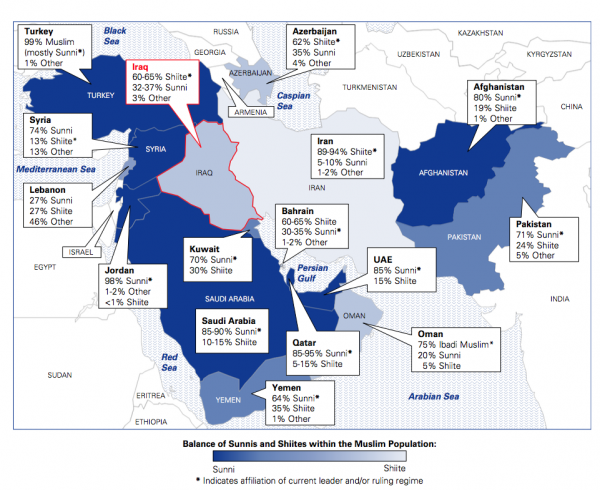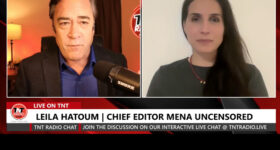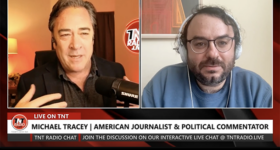21st Century Wire says…
While reading the following analysis, it’s also important to bear in mind to what degree the US and Britain and most importantly – Israel, are also responsible for accentuating the sectarian divide between Sunni and Shia in the region. The evidence of this can be found in the West’s muted response over Riyadh’s medieval mass-execution provocation.
No emergency meeting at the UN Security Council or crisis talks in Geneva, and certainly no calls for ‘regime change’. Money talks.
Indeed, the Anglo-Americans know very well what the term ‘divide and rule’ truly means – they practically invented the term…
Tyler Durden
Zero Hedge
Earlier today, in “Mid-East Melee: Sectarian Showdown Looms As Bahrain Cuts Ties With Iran, UAE Recalls Ambassador,” we brought you the latest from the war-torn Mid-East where a worsening spat between Saudi Arabia and Iran threatens to plunge the region into chaos.
Make no mistake, things were already out of control. The conflict in Syria has mushroomed into a global proxy war, Iraq is struggling to drive Islamic State from key cities, and Yemen remains mired in war nine months after the Saudis entered the fray to drive back the Houthis and restore the Hadi government.
Against that backdrop, the region could have done without the events that unfolded over the weekend. By executing prominent Shiite cleric Nimr al-Nimr, Riyadh has infuriated the Shiite community which took to the streets in protest, even going so far as to firebomb the Saudi embassy in Tehran.
In order to understand the upcoming sectarian strife and in order to fully grasp who belongs to Iran’s sphere of influence, and who is loyal to the Saudis, one needs to have a working knowledge of what the Sunni-Shiite split looks like across the region. Because this is set to become the key geopolitical issue in the weeks and months ahead, we thought it an opportune time to present the following map from Goldman which does a nice job of delineating the sectarian split.
Note the asterisks which indicate the affiliation of a country’s leadership.
From Goldman
Where are the main sectarian and ethnic divides in the Middle East today? Saudi Arabia and Iran, with their large respective Sunni and Shiite majorities, are generally viewed as two major opposing forces in the Middle East. They lie on opposite sides of an abstract and somewhat contentious demarcation known as the Shiite crescent, an area of Shiite influence stretching from Iran through southern Iraq and into parts of Syria and Lebanon.
The region’s geopolitical, religious, and sectarian relationships are in reality more dynamic and complex. The conflict in Syria continues to pit anti-government insurgents, including Sunni Islamists, against the Alawite (Shiite) government’s forces and Shiite militias supported by Iran. In Iraq, some Sunnis have felt increasingly disenfranchised under the Shiite-majority government in Baghdad (a relatively new development given Iraq’s long history of Sunni rule). The Islamic State (IS) militant group has exploited this sentiment, particularly in the Sunni-majority areas of northern Iraq.
How are the different branches of Islam represented in politics? In some countries, such as Saudi Arabia, the rulers adhere to the same branch of Islam as the majority of their citizens. However, this is not always the case. Despite being predominantly Shiite, Iraqis lived under Sunni rulers for much of history, including under the Ottoman Empire and the Ba’thist regime of Saddam Hussein. (Ba’thists are members of the Arab Socialist Ba’th Party, a political party founded in Syria in the 1940s on platforms of Arab nationalism and anti- colonialism. In Iraq, the Ba’thists governed from 1958 until the fall of Saddam Hussein in 2003.) The Iraqi Ba’thist regime was secular in name but reserved political influence for the Sunni elite. In a break from its long history of Sunni political dominance, Iraq is currently ruled by a Shiite-majority government centered in Baghdad. Conversely, in Sunni-majority Syria, members of the Shiite Alawite sect have controlled the government since 1970.
What is the composition of Sunnis and Shiites in the Muslim world today? Sunnis make up the majority of Muslims worldwide – an estimated 85-90%. Sunnis comprise 85% or more of the Muslim populations in Saudi Arabia, Qatar, Jordan, Syria, and the United Arab Emirates, and 70-85% in Kuwait, Pakistan, and Afghanistan. Shiites comprise the majority in Bahrain, Iraq, and Azerbaijan (all 60-65% Shiite), as well as in Iran (90-95%), home of the largest Shiite population. Although the Middle East and North Africa region is overwhelmingly Muslim (93%), it is home to only around 20% of Muslims worldwide. The majority – over 60% – lives in the Asia-Pacific region.
READ MORE SAUDI NEWS AT: 21st Century Wire Saudi Files














